Last year, Chris Lawrence explained the visual effects work on The Midnight Sky. Now he’s back to tell us about Framestore‘s work on the Kingsman prequel.
Back in 2020, Chris Zeh told us about Framestore’s work on The Secret Garden.
Gordon Curtis is working at Framestore for over 16 years. His filmography include many shows such as Gravity, Thor: Ragnarok, Fantastic Beasts: The Crimes of Grindlewald and His Dark Materials: Season 1.
What was your feeling to be back in the Kingsman universe?
Chris Zeh – I very much enjoyed working on Kingsman: The Golden Circle. As this film was mostly the same team (internally and externally), it was a no brainer for me.
Gordon Curtis – Excited. I loved the first two movies and you know with Ralph Fiennes taking the lead and Matthew Vaughn behind the lens, it’s going to be a great film. Also a great in house production team at Framestore
How was this collaboration with Director Matthew Vaughn and Production VFX Supervisor Angus Bickerton?
Chris Zeh – Working with Angus is always fun. He’s just a great client to have. Always looking for solutions to make stuff better, cheering us on with a smile on his face.
Gordon Curtis – Second everything Chris has said about Angus, his enthusiasm for every shot was infectious. He has such good background knowledge in physical camera rigs, it adds a real depth to how you approach the CG.
What were their expectations and approach about the visual effects?
Chris Zeh – One of Angus’ mantras is “How would you shoot this if you could?” I.e. he’s always thinking about shots including the (virtual) camera rig, lens, operator etc. I think this helps grounding shots in reality, even if the shots themselves are somewhat bonkers.
Chris Lawrence – Ben Davis’s cinematography was beautiful and it was a constant high bar to aim for with the VFX shots. There was some quite complex work and Angus is forever innovative in his approach, meaning there were always artistic and technical challenges to solve.
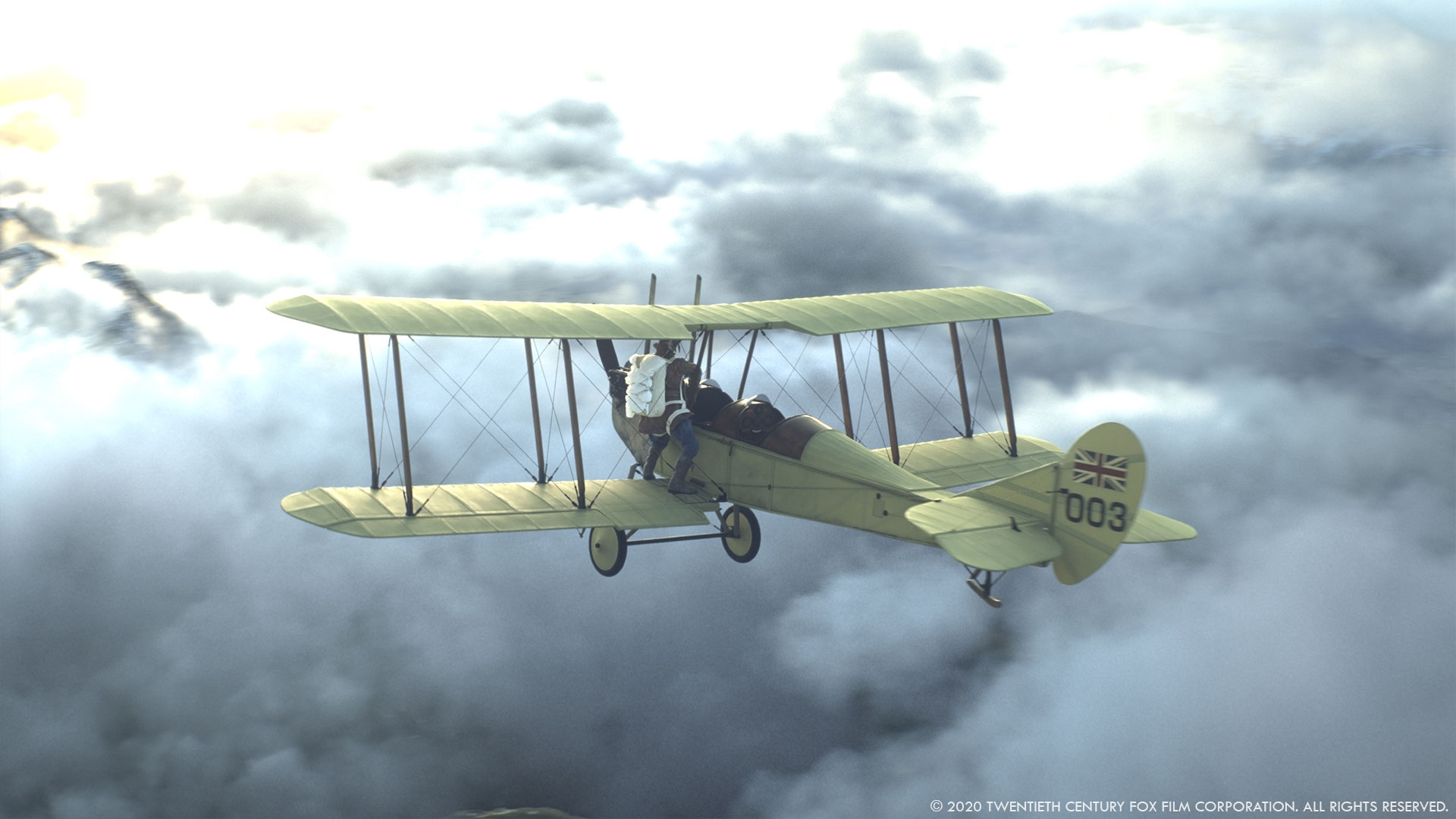
How did you organize the work with your VFX Producer?
Chris Lawrence – Our fab VFX Producer Danielle Morley did all the heavy lifting here, but we had some fairly obvious splits along sequence boundaries, for example we did the aerial shots of Orlando Oxford with one team, and the subsequent ‘climbing with goats’ sequence with another.
How was the work split between the Framestore offices?
Chris Lawrence – This was basically a London show but the great thing about having all these different offices over the globe is from time to time we can lend each other a hand! So we got some help towards the end from our friends in Montreal.
What are the sequences made by Framestore?
Chris Lawrence – The approach to Morton’s mountain base and the goats, which were all CG and modelled on a very handsome Markhor goat at LA zoo.
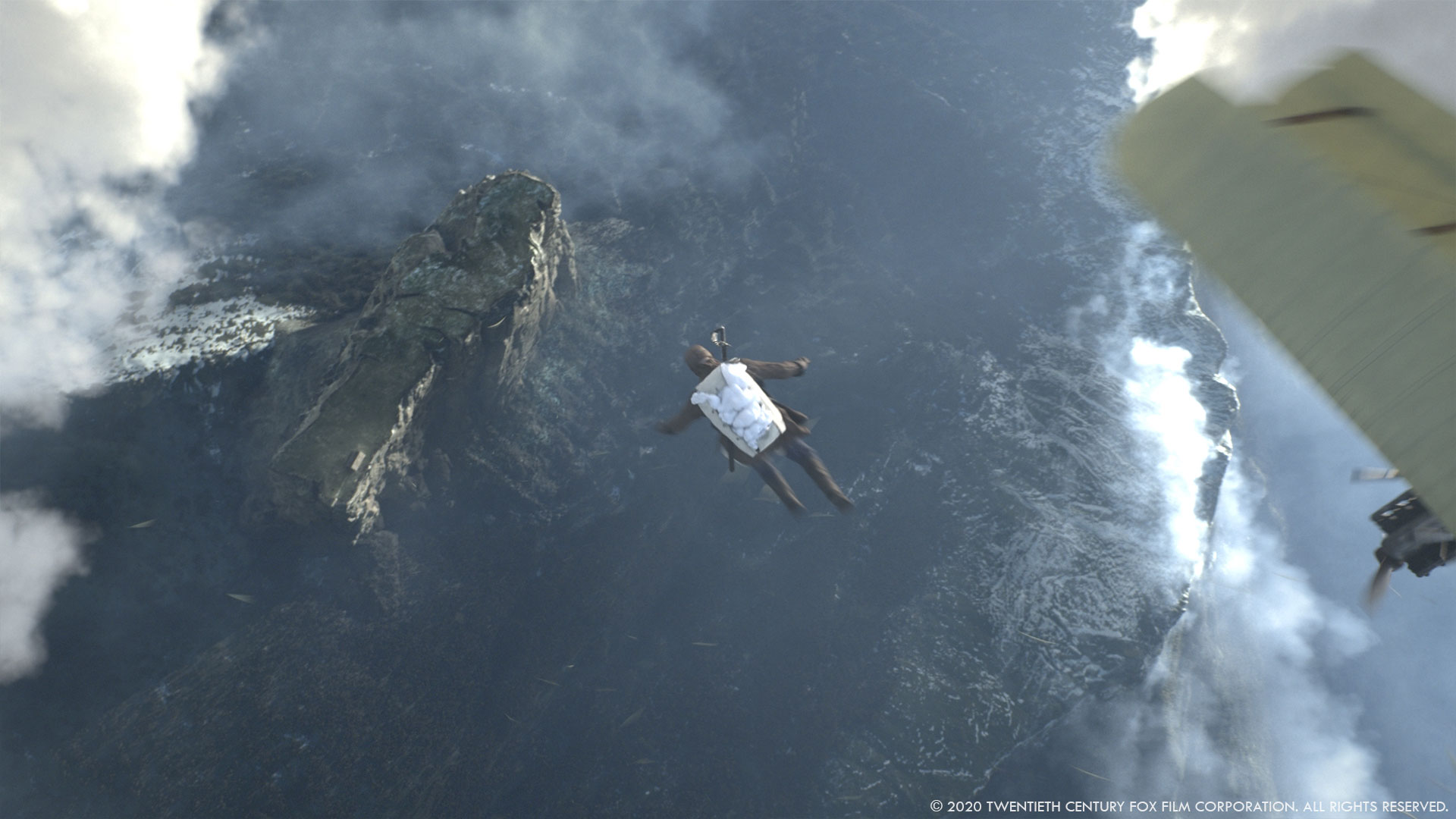
The movie is full of impossible camera moves. Can you elaborate about their creation?
Chris Zeh – Usually, Angus would start looking for references of similar shot setups. For example, super long telephoto shots from a helicopter. Then we would find their “essence”, might that be the crazy fast parallax, the lens distortion or the helicopter’s speed. From there on it’s a matter of telling the story in the shot whilst trying to preserve that “essence”.
Which one was the most complicated to create?
Chris Zeh – Not sure I can say which one was the most complicated, but I remember crash zooming out of a mountain was quite tricky. But so was the full CG skydiving and integrating CG with material from extreme fisheye lenses.
Gordon Curtis – Yes – Full credit to the tracking team, it’s not straightforward to track lenses with a viewing angle of over 180 degrees.
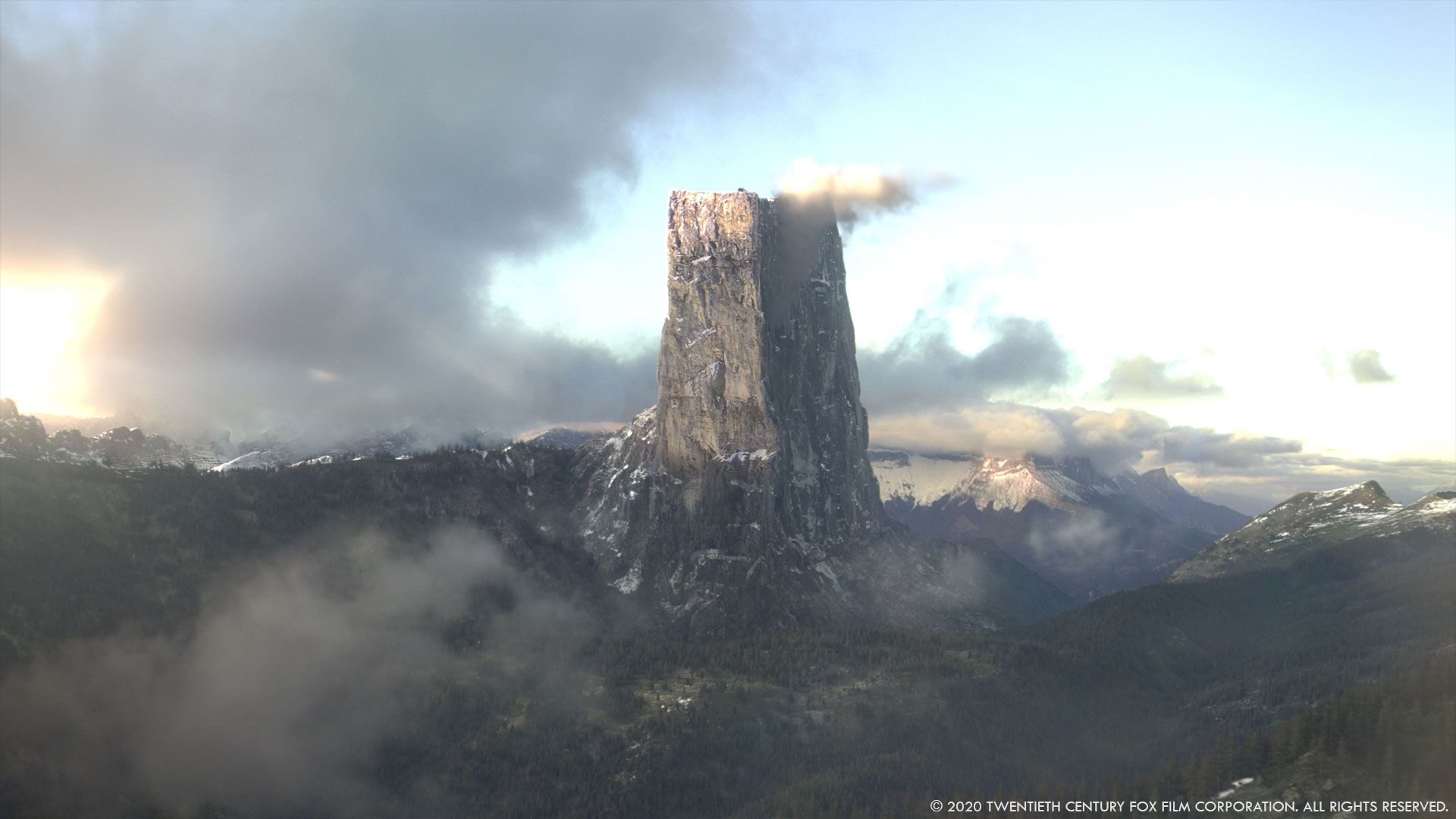
Can you explain in detail about the explosion work?
Chris Lawrence – We did a grenade explosion in the climatic end fight. Angus had a real appetite to do SFX for real so this was a plate that we composited in, with some CG additions to help with the integration.
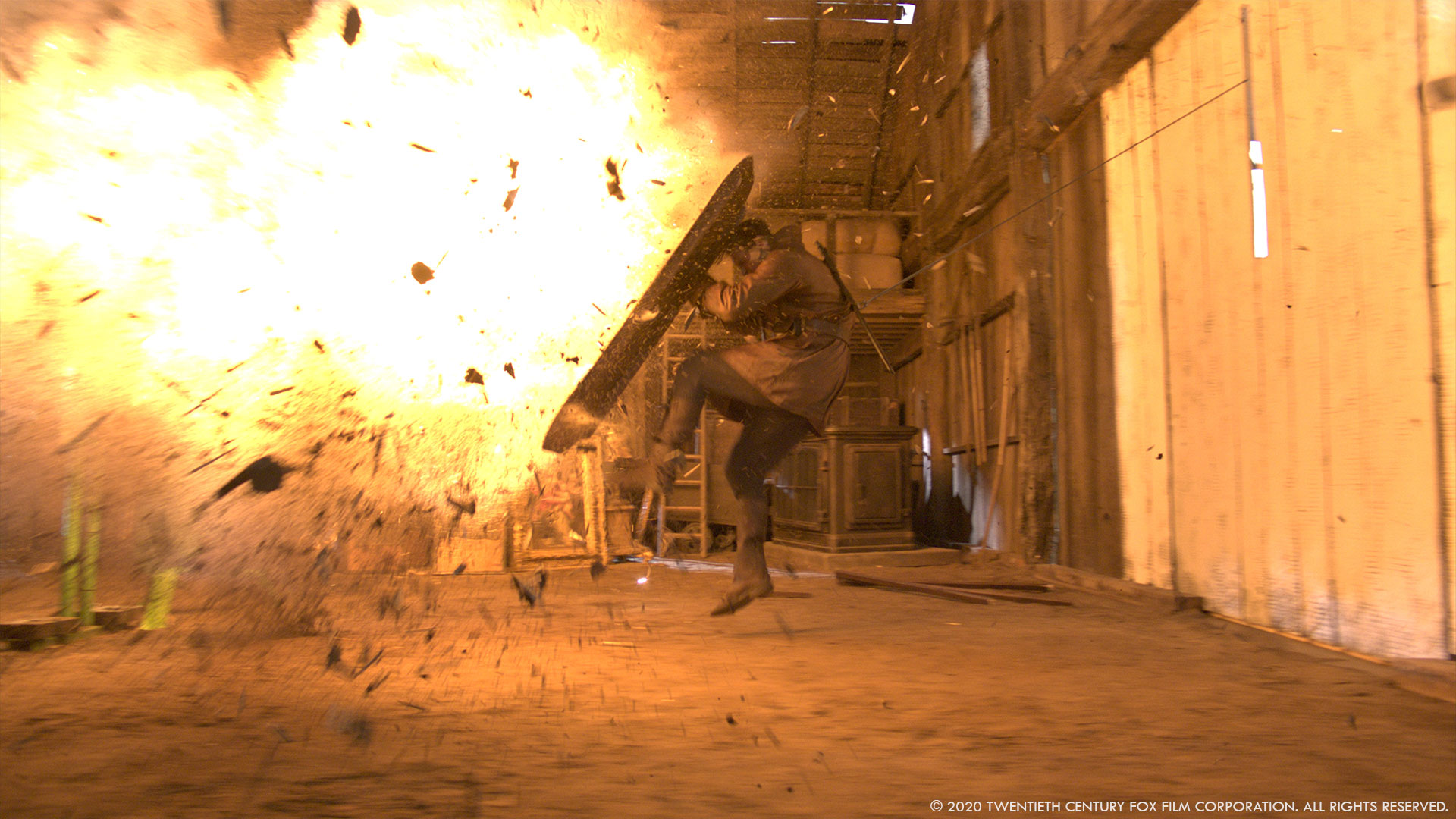
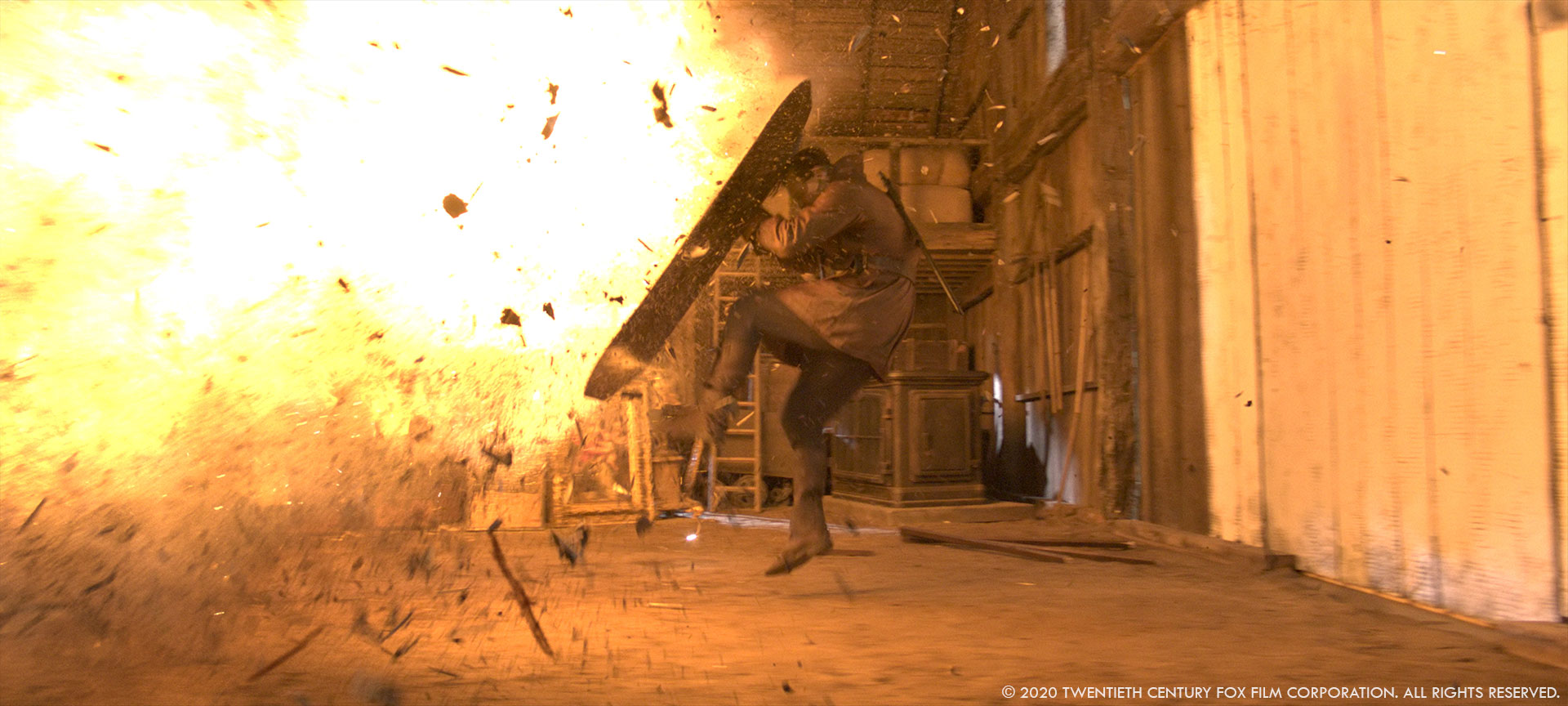
How did you create the various digital doubles and especially for Ralph Fiennes?
Gordon Curtis – We had good photoscan data for our hero characters. We spent a lot of time working up a high-fidelity digital doubles, especially for Ralph Fiennes.
Many shots jumped between plate characters from full-CG to partial CG with many combinations in between, so it was important that the characters held up seamlessly without jarring between cuts. This meant paying special attention not only to how the actors looked but also to their outfits. We worked hard to capture the material qualities, both how they were shaded but also how they were simulated. The folds in a thick leather coat behave very differently to those in a thick felt coat for example.
There are a couple of super close-up fully CG shots of Ralph in the free-fall sequence, so there was nowhere to hide especially when looking at him full in the face.
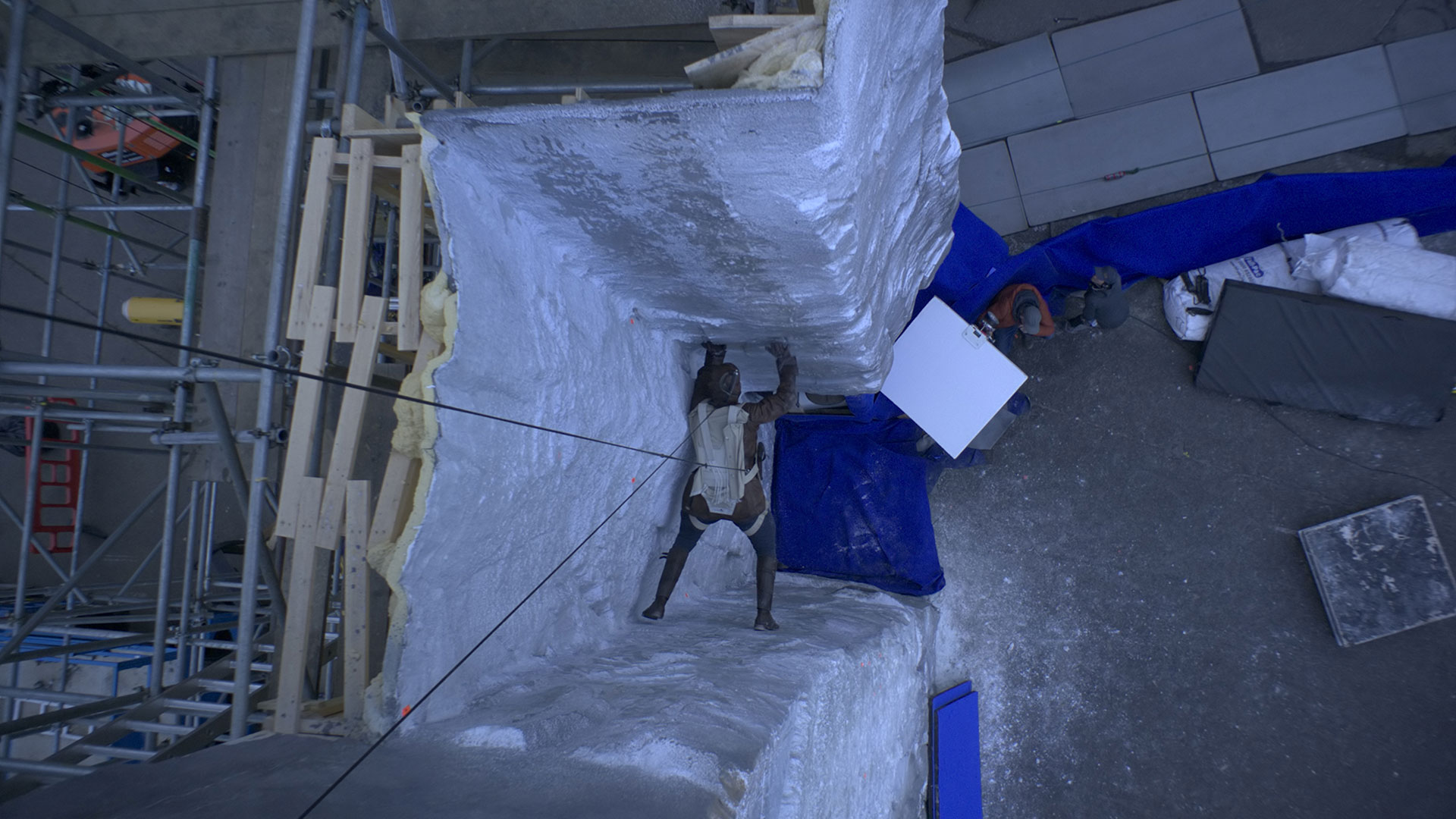
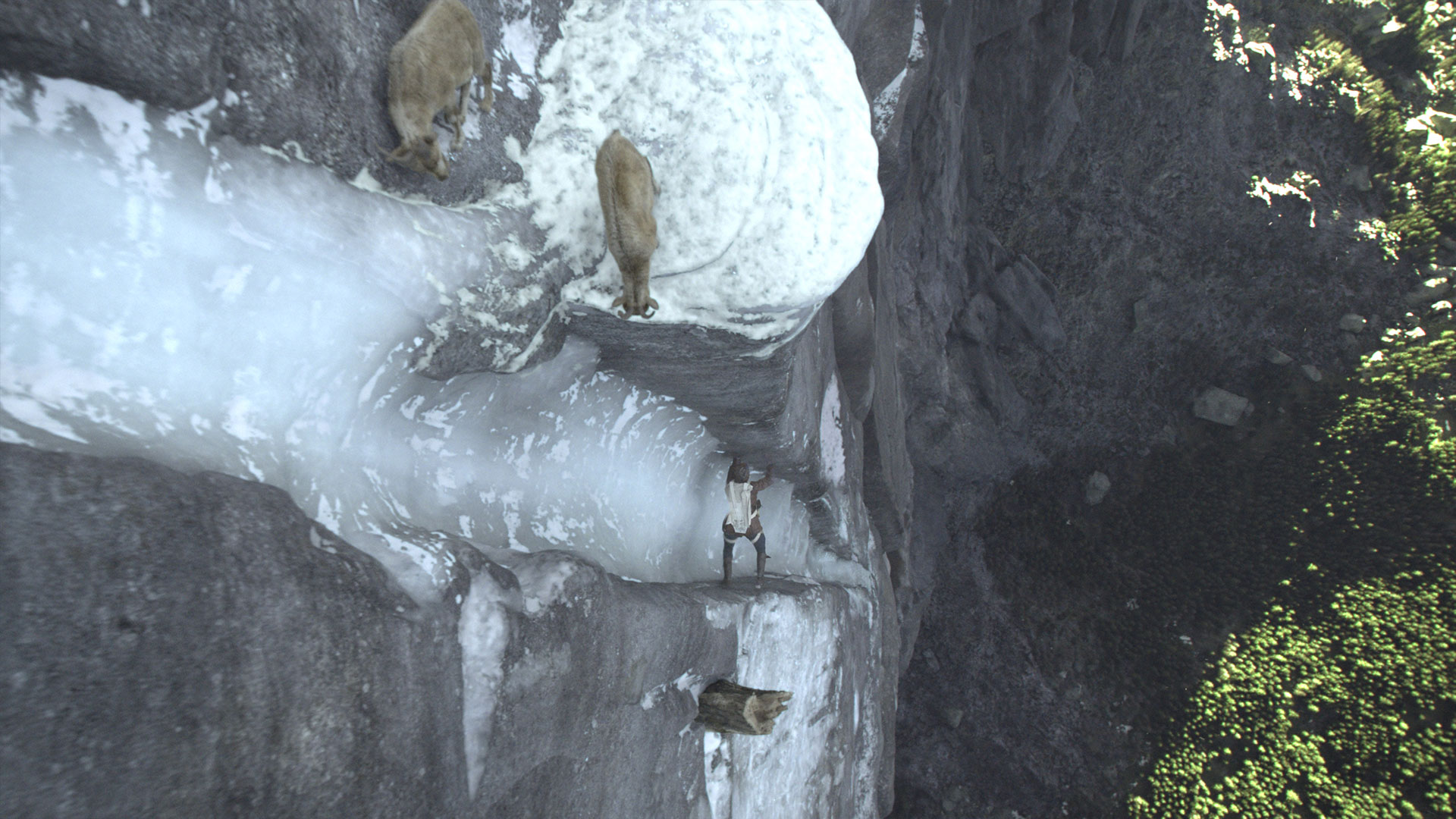
Can you elaborate about the environment work and especially the final location?
Gordon Curtis – The final sequence’s location is the incredible Mont Aiguille in the French Alps.
There were 3 main areas of action, a camp at the base of the mountain, the plateau at the top and the mountain face itself. Most were filmed on physical sets which were then fully replaced or enhanced with CG assets.
One of the biggest challenges was making the mountain twice its actual height and using a different rock type. It not only needed to work as a super wide asset, but very close-up in various locations on the cliff face. Even a crash zoom out from close-up to super wide in a single shot.
Once out of the block animation stage. We were able to use a ‘heat-map’ to see where the close-up action took place on the mountain and focused our high-resolution modelling and texturing on those areas. We also used digital matte painting across the sequence, especially when the action would have dictated a time consuming asset change.
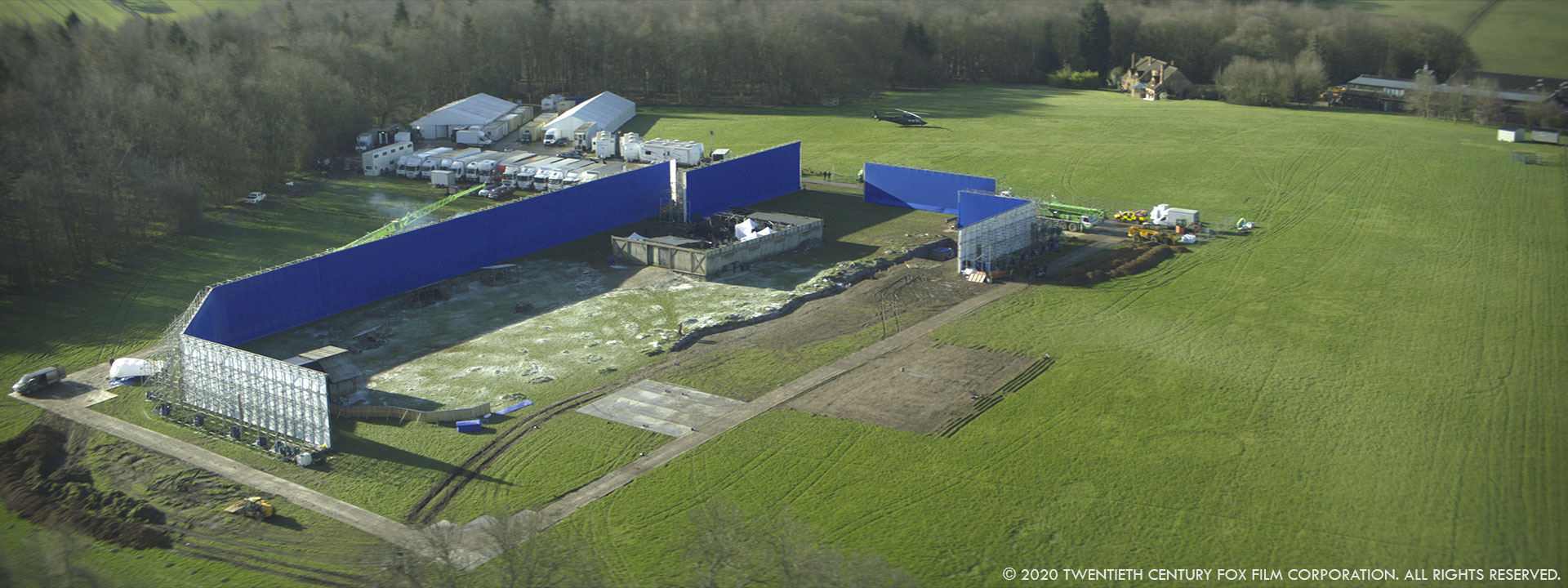
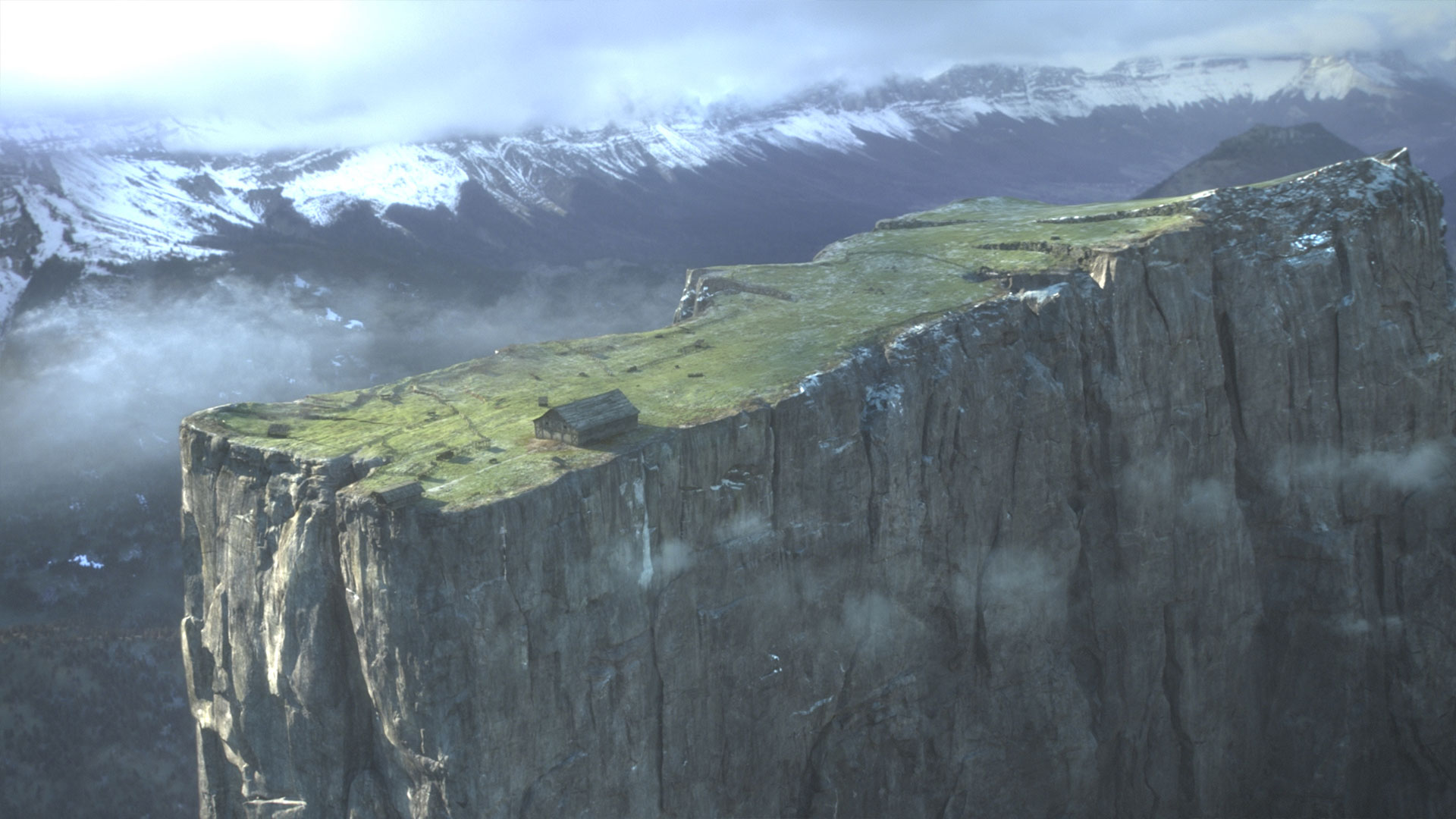
What kind of references did you receive for the environments?
Chris Zeh – Mont Aiguille and its surroundings in the French Alps was the reference for our environment. Unfortunately this pesky mountain is standing in slightly the wrong place for our purposes, so we had to digitally transplant it from its actual location into a much better place.
Angus had shot various takes of different times of day with a panorama rig from a helicopter on the actual location. So we had a pretty good idea of what the area looks like.
Gordon Curtis – We also received a photoscan of the terrain for the valley leading up to Mont Aiguille as geometry and textures with a full 360 of the mountain itself.
We were then able to work this up with the environments team, improving the models and textures, adding trees, rocks and foliage as well as removing the modern buildings and making creative changes to help tell the story.
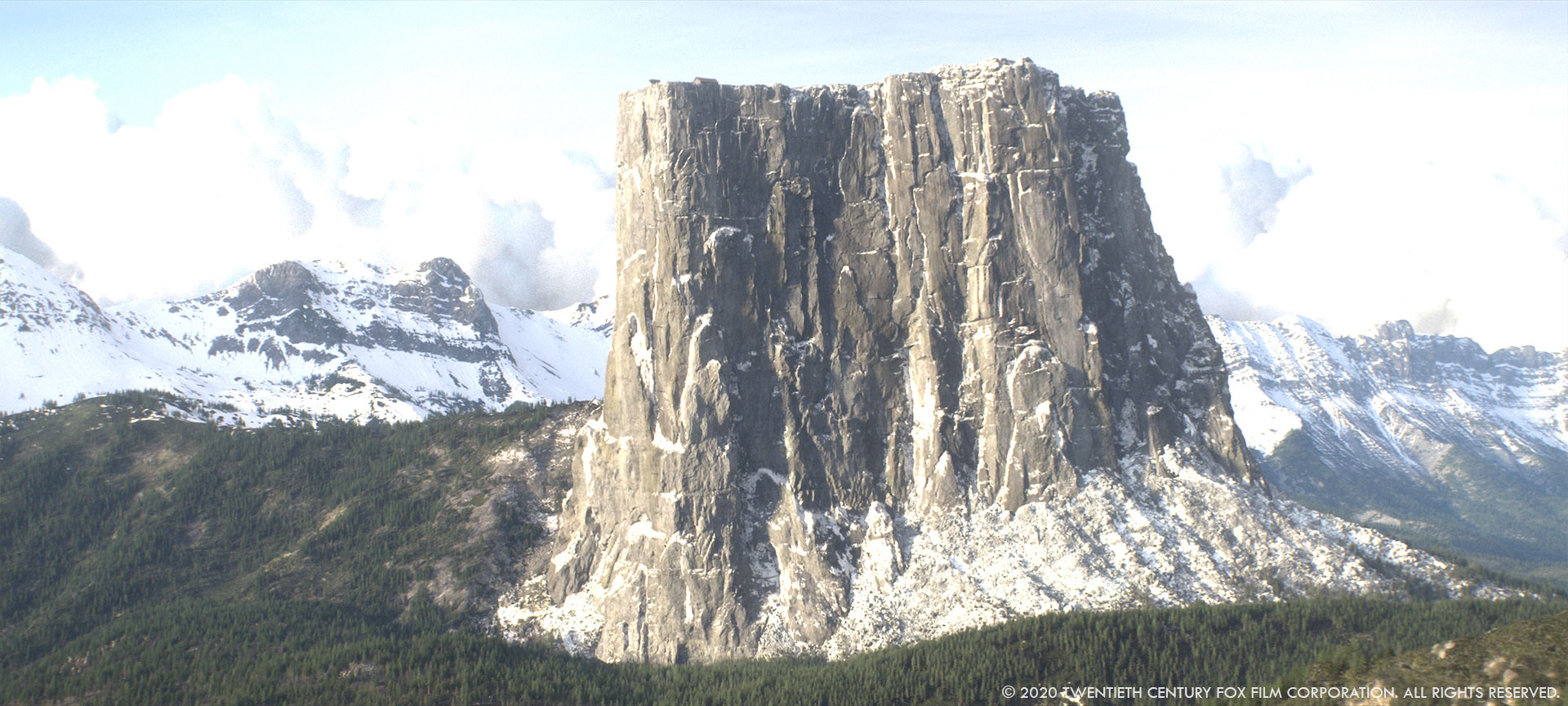
Can you explain in detail about the impressive free fall sequence?
Chris Lawrence – This was achieved using 4D facial capture. 4DMax scanned Ralph performing the shots, as well as doing a reduced FACS set. We built a digital double driven by the 4DMax performance with full groom and hand match moved eyes (fortunately slightly obscured by his flying goggles). We also did some mocap for Ralph’s body performance, in the end this was actually done by Angus himself donning the mocap suit! These were both blended together in animation. The shots were pretty unforgiving locked off close ups, but the hectic action and spinning environs made it a bit easier. We were very proud of the result and how quickly it came together.
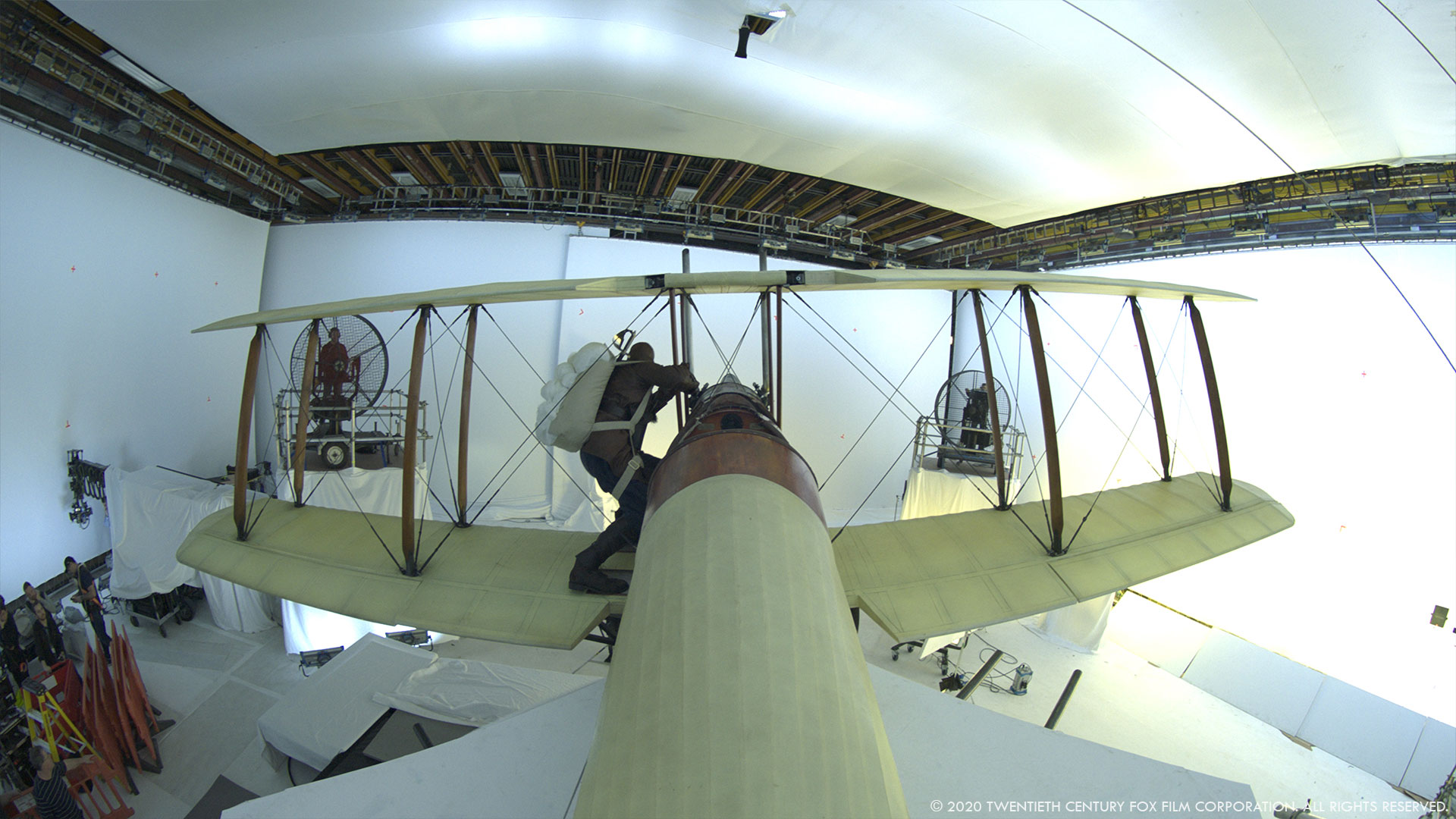
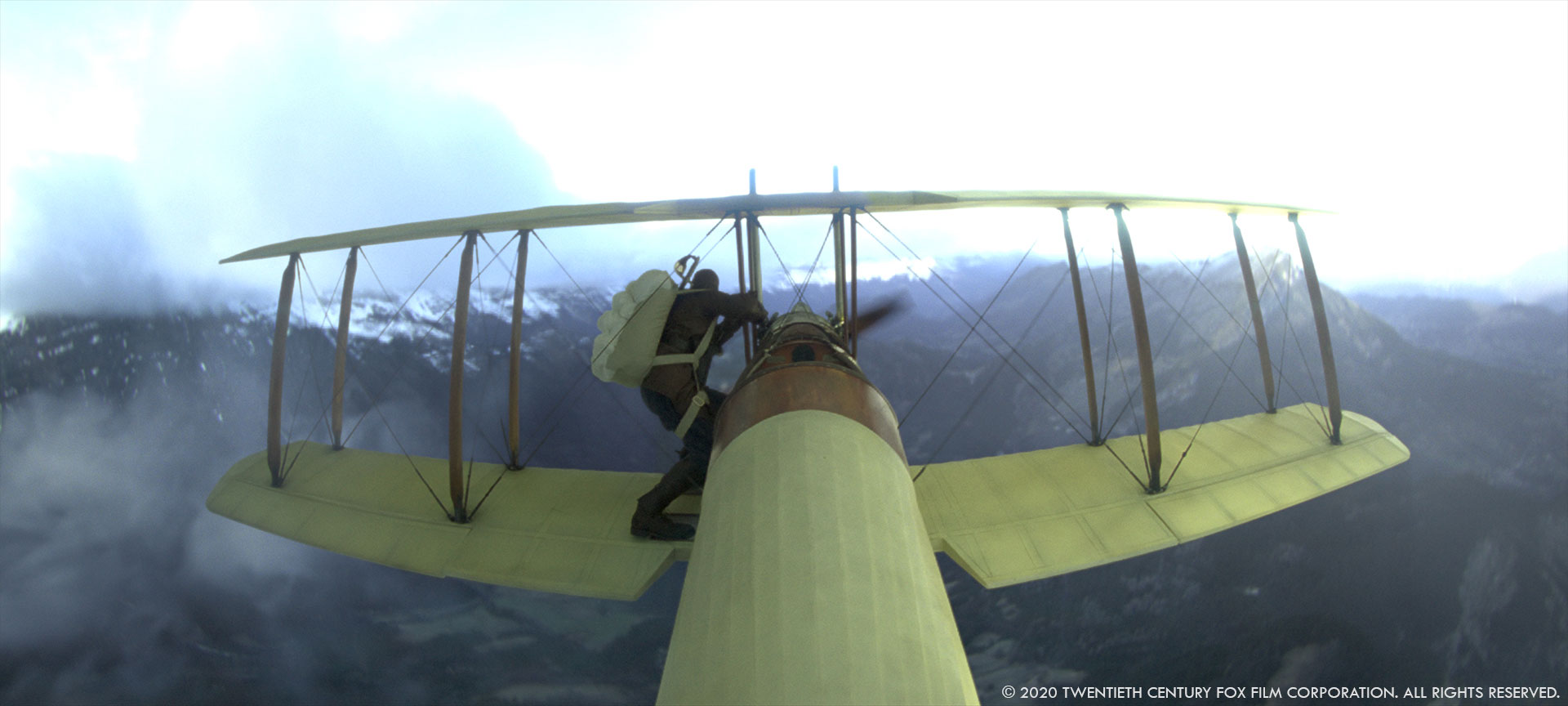
How was filmed the cliff sequence?
Gordon Curtis – Production built a 30ft cliff face at Longcross studios made of plaster and painted ice. Although not detailed enough to use in the film, there were key features such as an ice shelf and the chimney in which Ralph Fiennes goes full mountain goat and shimmies up. The action was shot on this which dictated camera moves and lighting. We replaced all of the mountain itself and then, depending on the shot, varying degrees of Ralph Fiennes. Some shots we roto’ed and kept his full plate action, some we kept his face and torso and some we replaced him with CG altogether.
Can you elaborate about the design and creation of the goats?
Gordon Curtis – The Markhor Goat is an amazing creature, it actually comes from the Afghanistan region and the males have incredibly big horns and a long mane.
We were lucky enough to have one of the Framestore team from the LA office visit the LA zoo and shoot high resolution photography and motion studies there. This proved invaluable for the assets, animation and the Creature FX teams.
Interestingly though, because it was hot in LA, the Markhors had shed a lot of fur and we wanted a fluffier, cold weather goat. One of our riggers was able to visit the Cairngorms, where there are also some captive Markhor goats and was able to get some great groom reference photography there.
Chris Lawrence – Our animation supervisor Max Solomon and his team did a great job of capturing the goats’ essence and character. Given the numbers of goats we built a library of cycles and deployed these to the shots, though quite often these would be further tweaked to bring the shots to life in a subtle way. A good example was the goats who look up from their chewing as Rasputin enters.
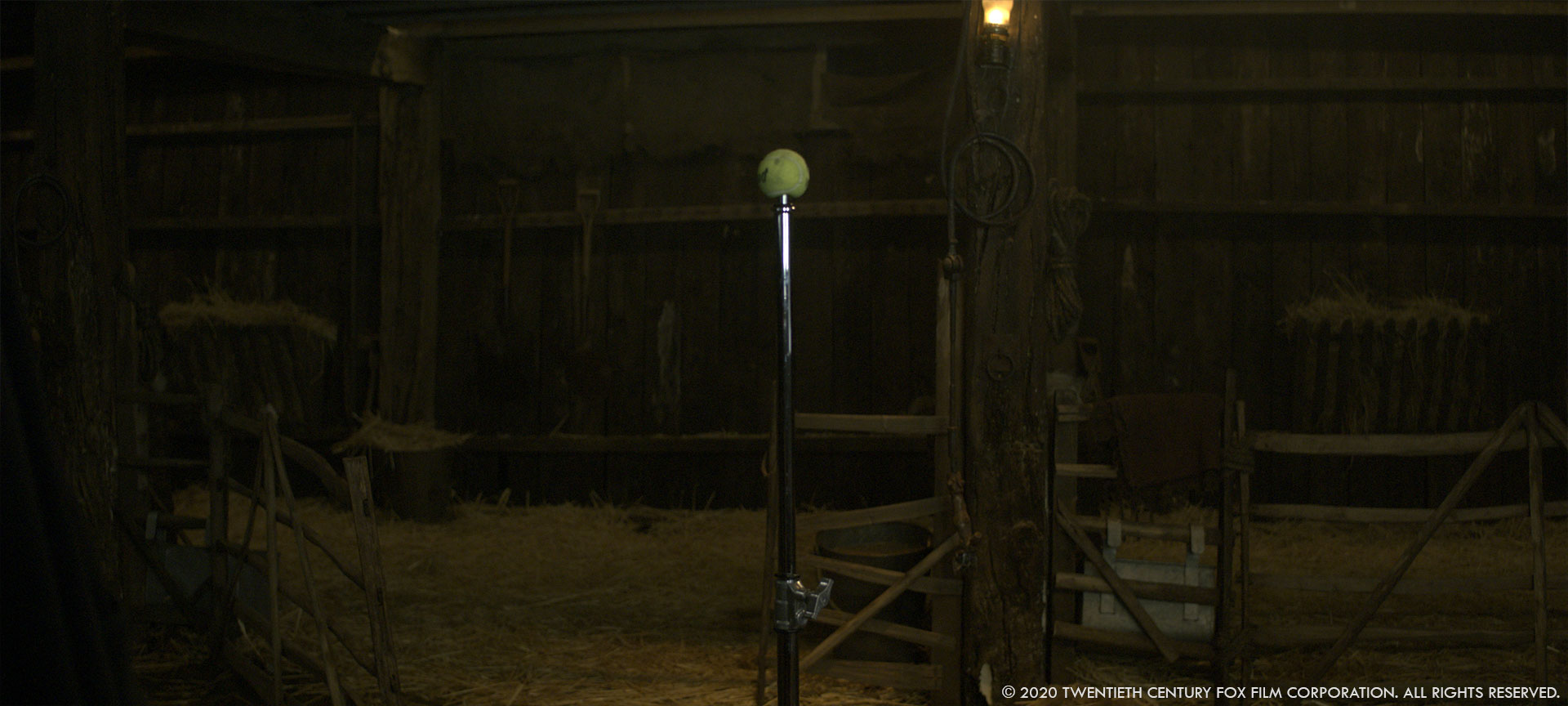
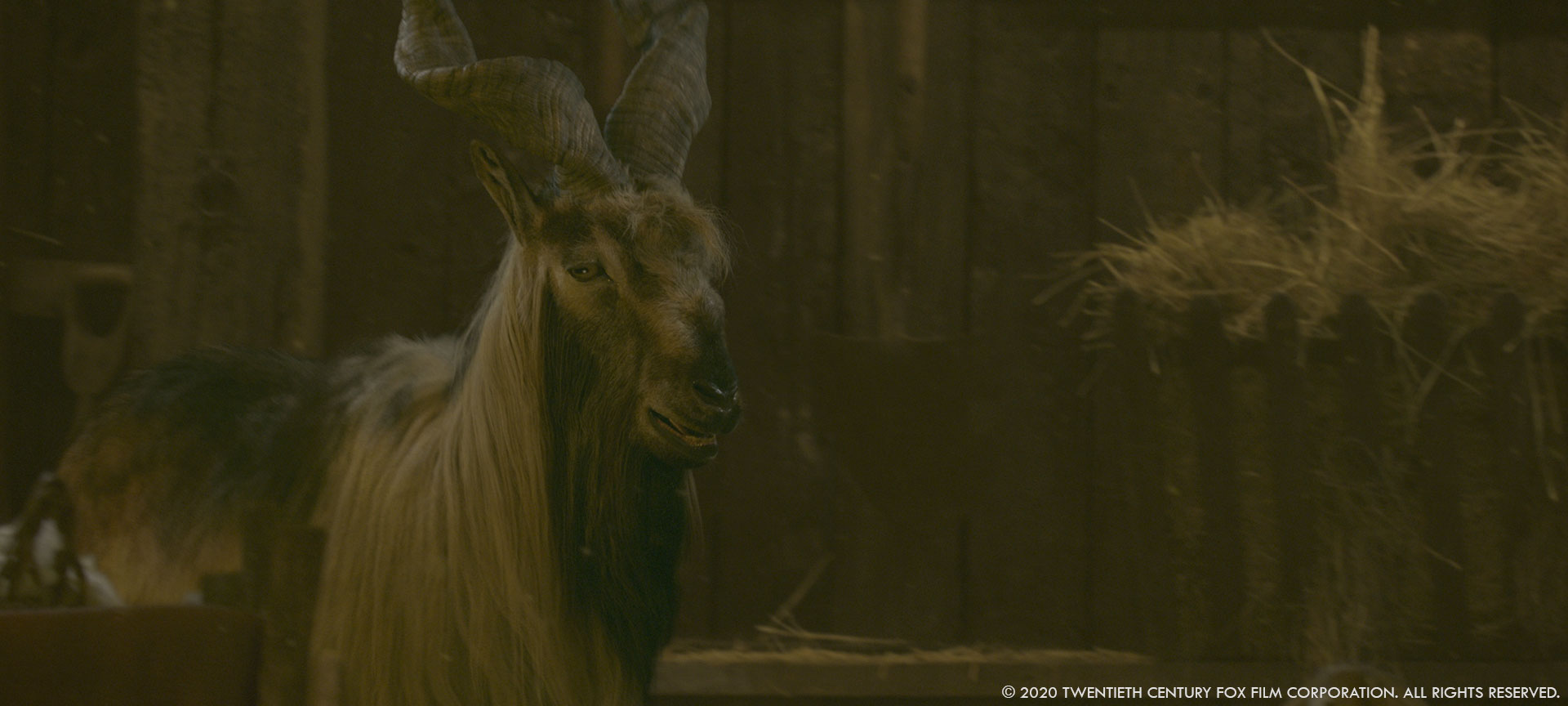
Can you tell us more about their fur?
Gordon Curtis – The groom really held the key to the character in the goats. When you first start looking at them, it’s hard to tell the nanny goats in a herd apart, but after studying enough footage of them, we started to pick out specific groom traits for each goat. We even gave them names.
For the Creature FX team, the bull goat’s long mane proved the biggest challenge. They spent some time with motion studies to get the right ‘swing’ when it walked and the sharp movement when it butted its head.
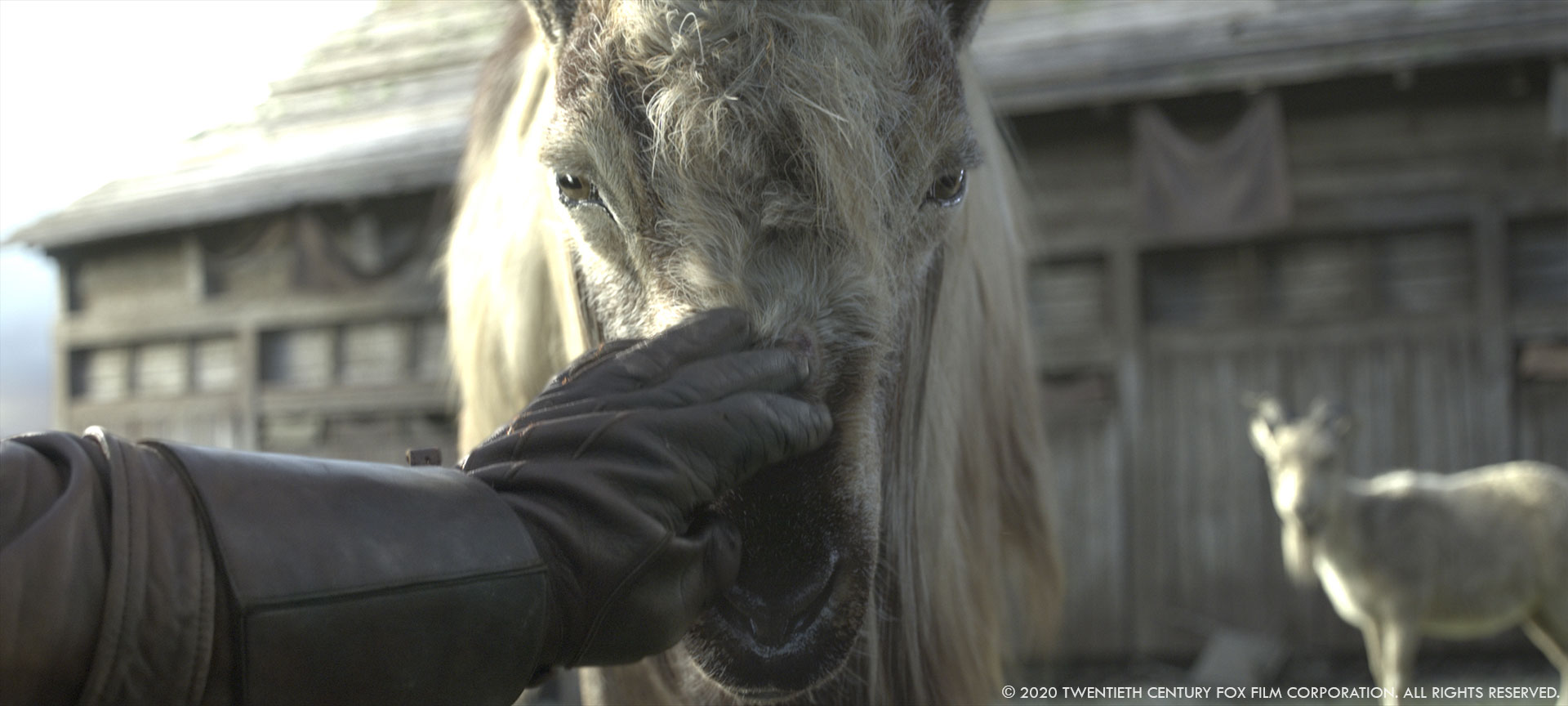
How did you handle their animation and especially when they are climbing?
Gordon Curtis – When studying footage of the Markhor goats, it’s hard to believe how little contact points their hooves need to stand on apparently sheer rock faces.
The challenge was to mimic this in a way that was believable for the action that took place on plate. The weight transfer between limbs and the tiny grips that the toes were stood on as well as scapular position were the key to this.
Which shot or sequence was the most challenging?
Gordon Curtis – There is a great shot with Djimon Hounsou, where he runs into the base camp, leaps from the wall onto the lift’s counterweight. This was a stitch of 5 different plates that involved blends between body tracks and moving back and forth between full plate Djimon, to plate torso with CG legs and full CG, as well as as environment replacement, top-ups and various FX elements. Although individually the tasks that made the shot were fairly straightforward, the logistics of pulling this together into a cohesive piece of action was certainly challenging.
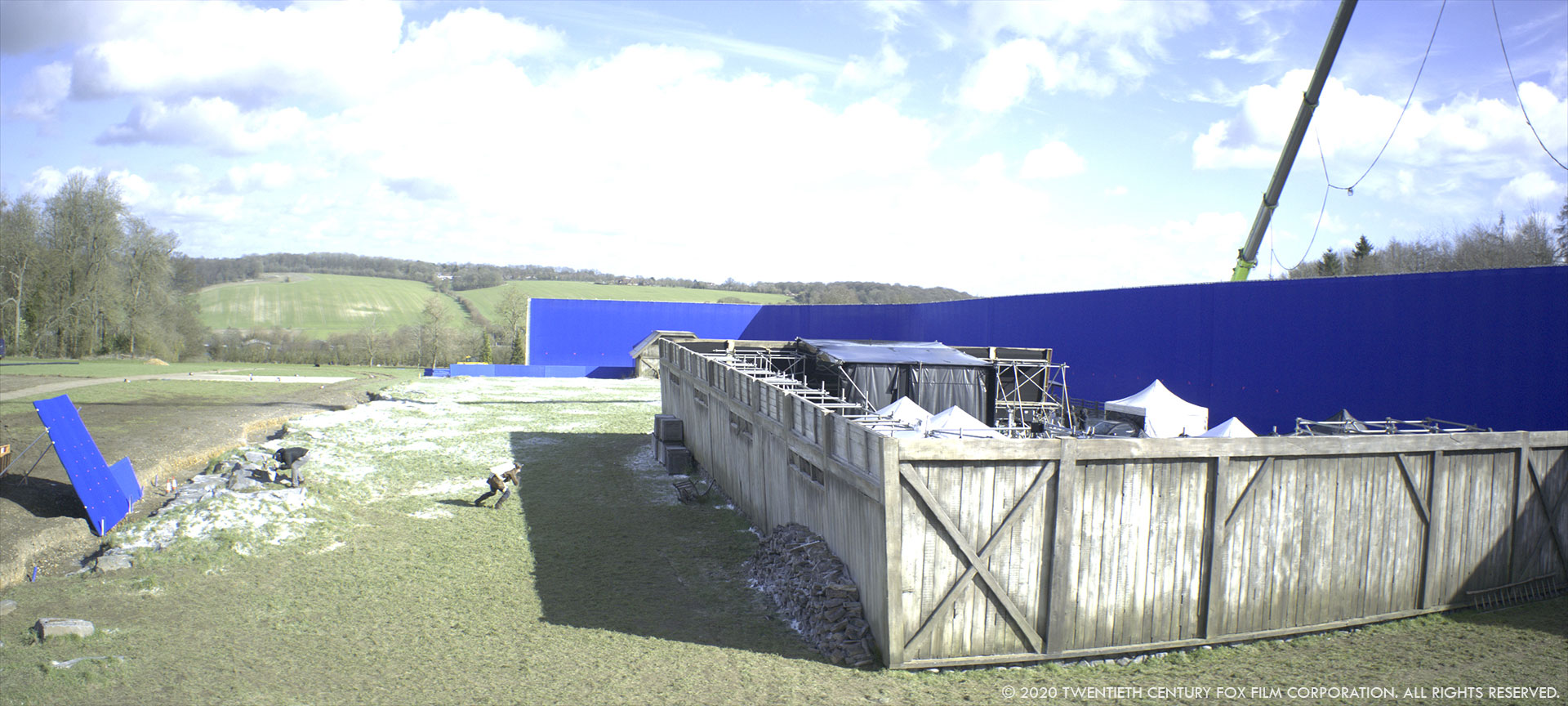
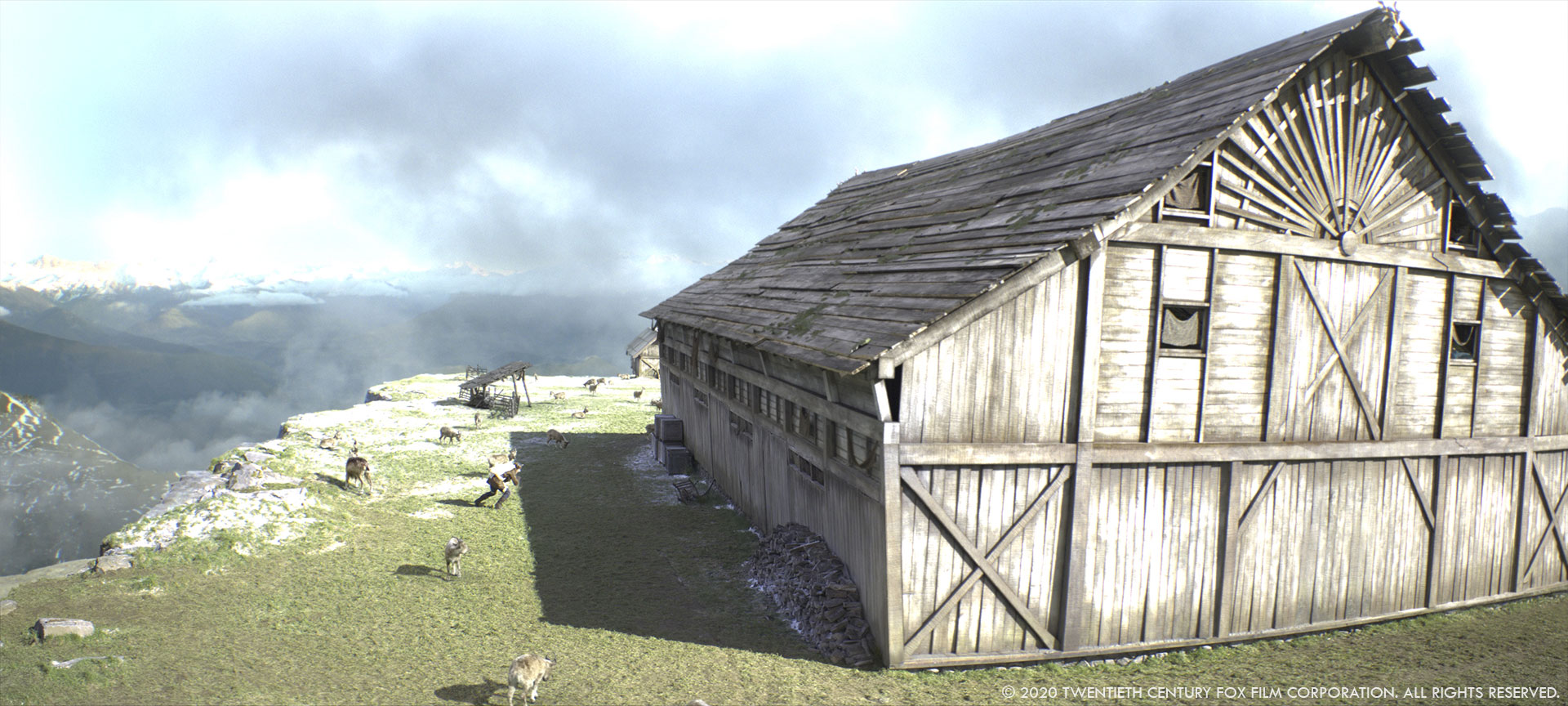
Is there something specific that gives you some really short nights?
Chris Zeh – CG goats are a lot like real goats. Admirable creatures but can be tricky to work with. If you google “goats have a reputation for”, most of the things you find there are true for CG goats as well.
Gordon Curtis – The lighting on the cliff face and on the plateau. Getting the right balance between dramatic sunrise for the background and ambiently lit foreground characters and action involved a lot of iterations and different variations on the theme. An honourable mention also to Ralph stuck in the plane wing, especially with super wide fisheye lenses.
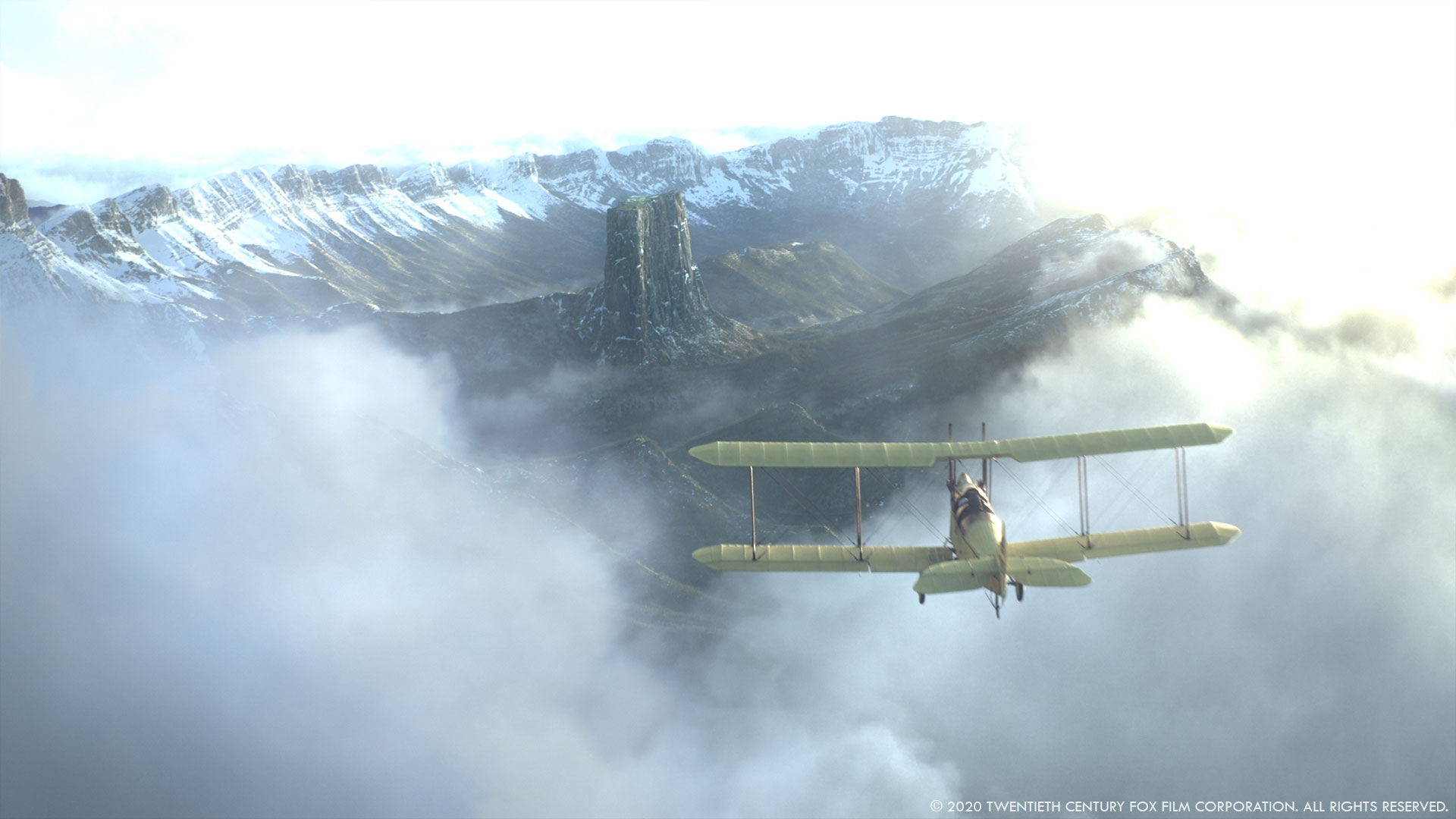
What is your favorite shot or sequence?
Chris Zeh – I guess for me it was the infamous “splat”. Not sure I’m giving away too much here, but there is a shot about someone’s demise and everybody who saw it the first time had to laugh. But more in the “wide-eyed, hand in front of mouth” way.
Gordon Curtis – It’s got to be the crash zoom out as Ralph Fiennes regains consciousness whilst hanging by his parachute on the mountain face. Not only did it really show off all the team’s work, but it’s a classic Matthew Vaughn camera move that lets you know you’re in the King’s Man universe.
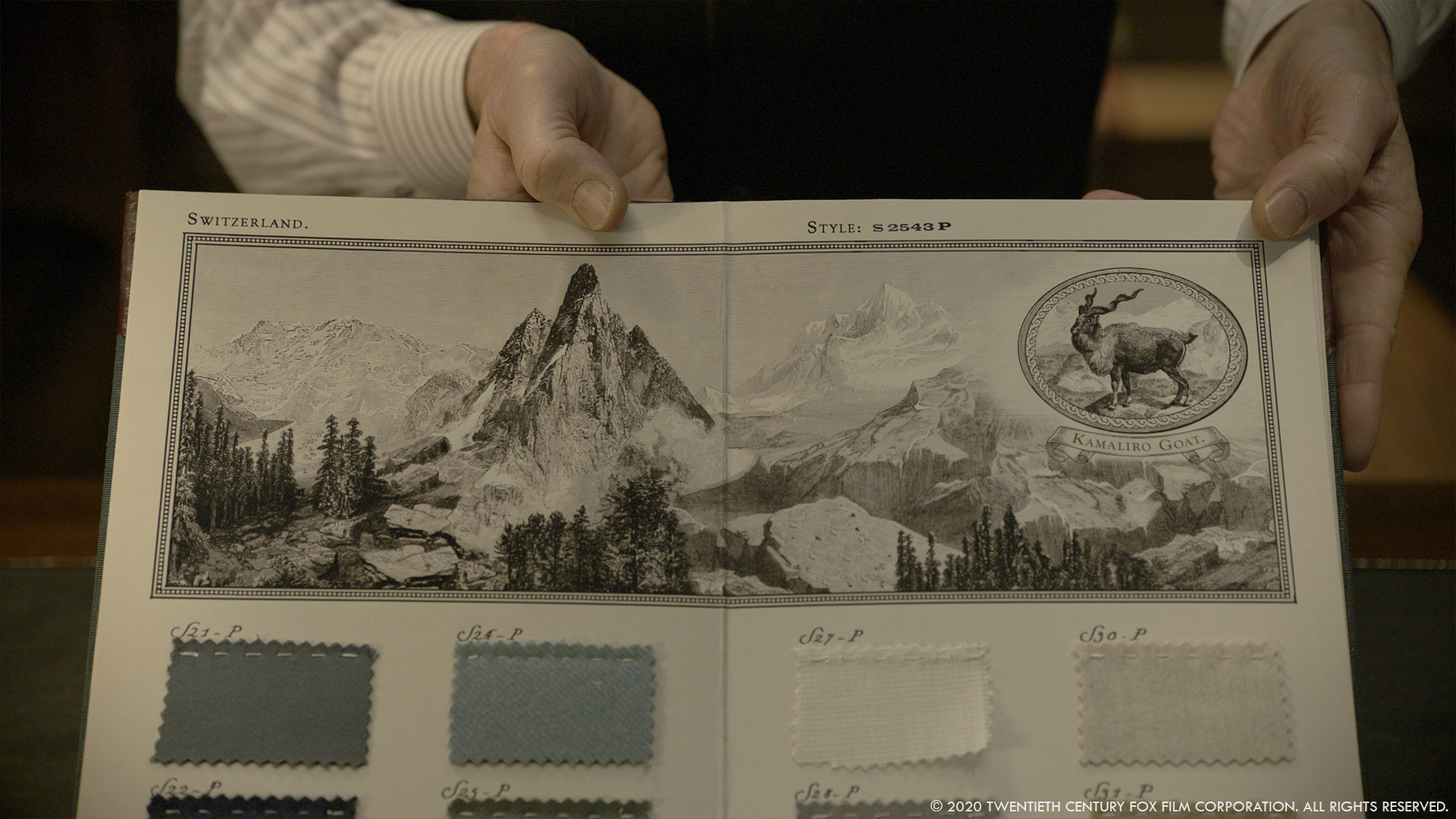
What is your best memory on this show?
Chris Zeh – I do remember we were finishing the last shot when we were all informed we had to leave the office due to the Covid-19 pandemic. A few hours later I finished the shot at home. I think it was the same for Angus. Possibly not the most upbeat memory, but surely one that will stick with me.
Gordon Curtis – We did a day’s mountain face reference shoot with Angus at a quarry in the Brecon Beacons in Wales. Glorious weather, great location and good company. The best memory was seeing an old tree branch that was perfect reference for the parachute sequence half way up a very steep hill, we were all discussing logistics of the best way to get to it, when the next moment, we looked up and Angus had somehow managed to traverse his way up there to grab it – an all action VFX Supervisor.
Chris Lawrence – I remember at some point telling Angus that my family folklore is that my great grandfather had once hosted Rasputin. Angus is a great storyteller and I think that might be the first time I’ve ever seen him lost for words!
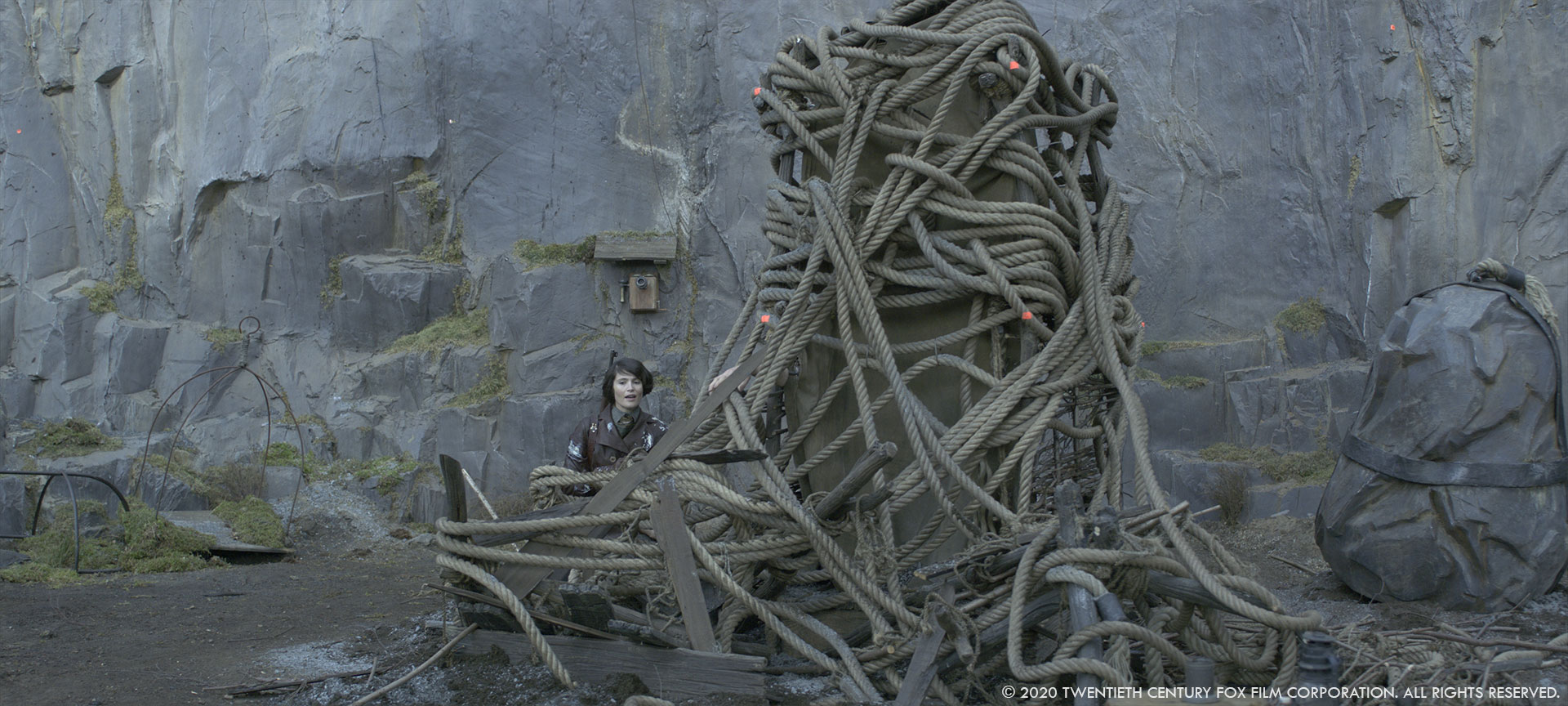
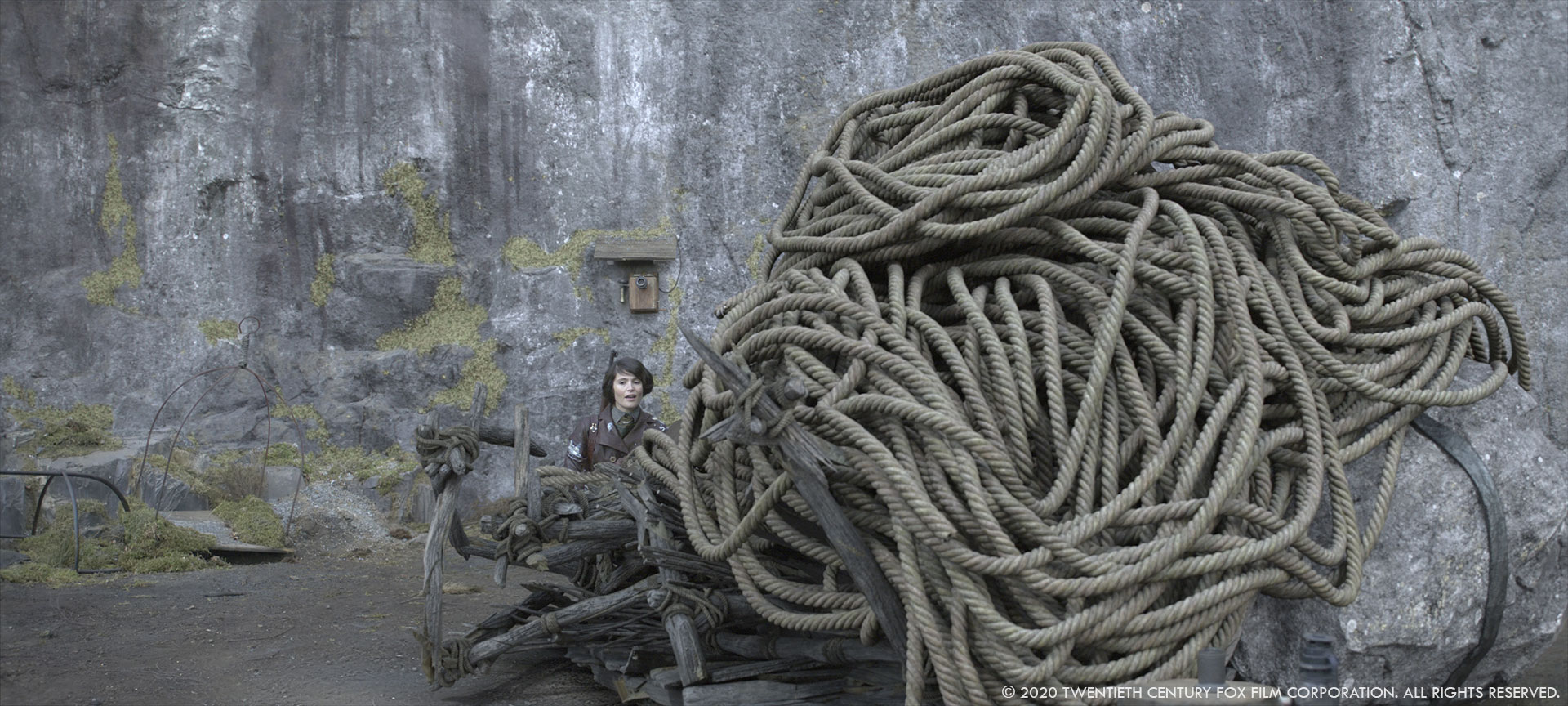
How long have you worked on this show?
Chris Zeh – About a year, I think.
What’s the VFX shots count?
349.
What was the size of your team?
Over 250 artists worked on The King’s Man.
What is your next project?
Chris Lawrence – I went straight onto shooting The Midnight Sky (which actually came out a year before this one did!).
A big thanks for your time.
WANT TO KNOW MORE?
Framestore: Dedicated page about The King’s Man on Framestore website.
© Vincent Frei – The Art of VFX – 2022




